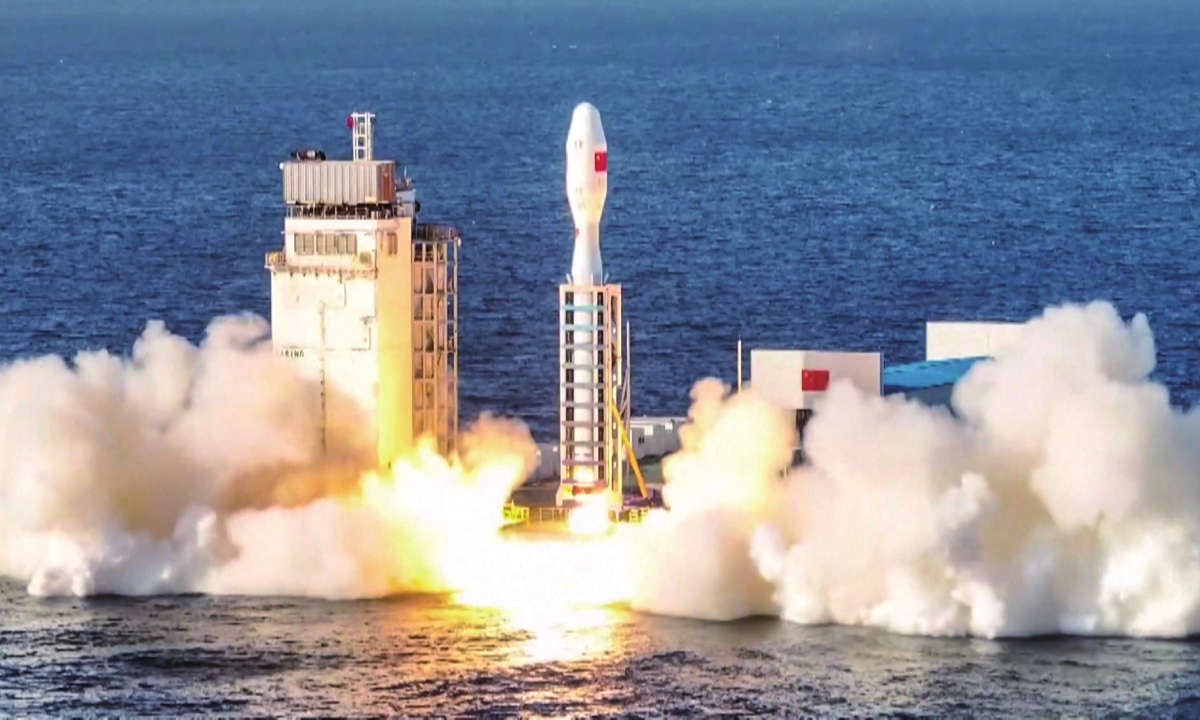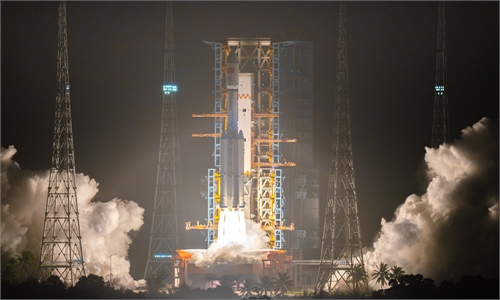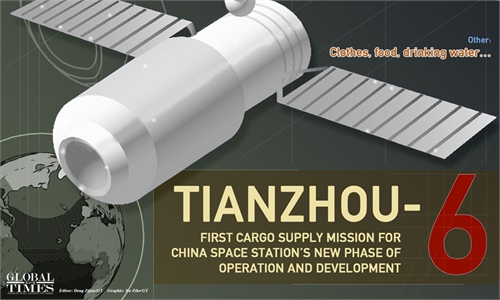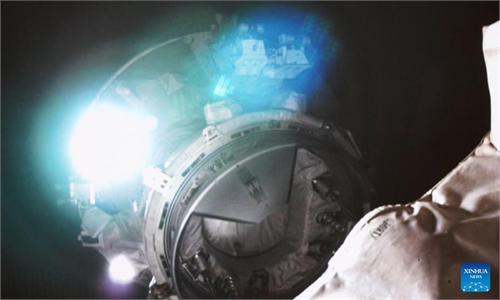Commercial space industry flying high
Nation's reusable experimental spacecraft lands successfully

The Smart Dragon-3, or Jielong-3, makes a successful maiden flight on December 9, 2022, from waters of the Yellow Sea, sending 14 satellites precisely into their designated orbit. Photo: VCG
Following 276 days of in-orbit operation, China's reusable experimental spacecraft landed at the scheduled site, injecting impetus to the country's burgeoning commercial space sector which has stepped up efforts to reduce cost and improve efficiency.
China launched a reusable experimental spacecraft using its Long March-2F carrier rocket from the Jiuquan Satellite Launch Center in Northwest China's Gansu Province on August 5, 2022, to test spacecraft reusability and in-orbit service technology to support the peaceful use of the space, the Xinhua News Agency reported.
The success of the experiment marked a major breakthrough in China's research on reusable spacecraft technologies, which will provide more convenient and affordable round-trip launches for the peaceful use of space in the future, China Aerospace Science and Technology Corp, the leading national player in the space sector, said in a news briefing on Monday.
It is the second time that China's reusable experimental spacecraft landed at its planned site during commercial operations. In September 2020, a spacecraft returned to the planned landing site after two days in orbit. That spacecraft was also launched with a Long March-2F carrier rocket.
Pace-setting mission
Huang Zhicheng, a space industry expert, told the Global Times that the pace-setting mission was challenging and very complicated for China's reusable experimental spacecraft launches to date. "The breakthroughs made could pave a solid foundation for a more advanced, economical and practical reusable spacecraft system in the future," Huang said.
Spacecraft have the technical characteristics of being low cost and high reliability, which can meet the development needs for inexpensive access to space in the future, and have huge growth potential in terms of commercial applications, Yang Huijun, a veteran space expert, told the Global Times.
"The development of such vehicles will significantly reduce the cost of space launches. It could not only provide in-orbit services such as replenishing personnel, supplies and fuel for the space station, helping transport products made in the space station back to Earth," Yang noted, adding that it could also carry passengers for a space travel.
Currently, only a few space firms in the world have grasped reusable spacecraft technology including the world's most advanced rockets and spacecraft manufacturer SpaceX, Jeff Bezos' space tourism venture Blue Origin and China's CASTC.
Associated innovations
Sitting at the upstream of the spacecraft industrial chain, Dongcai Technoloy, a high-performance rubber processing agents and high-tech materials based company, said some of its polymer materials can be applied to spacecraft to meet the requirements of high temperature resistance, ablation resistance, reusability and high-efficiency heat insulation.
Chinese commercial space market, driven by maturing relevant aerospace technologies, is now on a fast development track with multiple opportunities ahead, according to Jia Qilong, chief marketing officer of Jeatron Tech, a satellite start-up based in Shanghai.
"With the support of the government and capital injection from the state, provinces and cities, China's commercial space industry has maintained a compound annual growth rate of more than 20 percent during the past five years," Jia told the Global Times.
Research firm Taibo Intelligence said in a recent report that over the coming five years, the commercial space sector will enter a golden period of development, and Chinese firms will usher in new market opportunities. In terms of overall scale, domestic commercial space market value will likely reach 2.8 trillion yuan ($405 billion) in 2025.
Satellite manufacturing and rocket launches have become hot areas for attracting private investment. Taibo Intelligence predicted that this year may be a "big year for China's commercial space industry", and the financing scale of some companies is expected to hit new record high, as many may kick off their IPOs.
Most of China's private aerospace companies were established after 2015. Despite the condensed period, they have been catching up quickly over recent years in terms of innovations, said Huang.
Falling costs
With the expansion of space activities, the frequency of launching spacecraft for the transportation of personnel and cargo is increasing. As capital enters the field of manned space travel, low-cost operation of spacecraft has become a basic requirement for the sustainable and healthy development of the sector, experts said.
Regarding future international space race, rocket and space applications, and lowering costs have become the buzz words.
Thanks to the standardization and intelligent manufacturing of satellites, the cost of satellite development and deployment has come down. Coupled with reusable rocket technology and the development of medium and large rockets, the cost of commercial aerospace infrastructure is also edging down, enhancing the sustainability of the commercial operation of the industry.
Jia of Jeatron Tech said the firm has been making efforts to produce more reliable and high-precision satellites at relatively low cost by mass production.
Commsat, a Beijing-based private satellite company, has been focused on advancing key technologies and mass production, which is expected to reduce the cost of domestic satellites by 60 percent within a few years.
Its plant in Tangshan, North China's Hebei Province, is the first commercial satellite factory approved by the National Development and Reform Commission, China's top economic planner. Following the first-phase operation this year, it could achieve annual production of some 100 satellites.
"Building a satellite manufacturing plant is meant to solve the problem of 'burning money for launching satellites', and eventually we will produce satellites like cars," Xie Tao, president of Commsat, told the Global Times.




